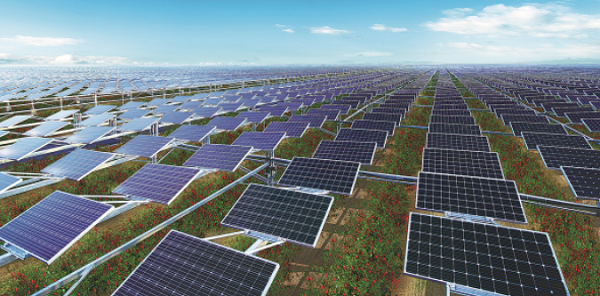

-
- 中文



Ningxia Baofeng Energy Group's solar-agriculture project involving goji berries farmed under photovoltaic panels has won major accolades. [Photo provided to China Daily]
The installed capacity of new energy power plants in the Ningxia Hui autonomous region has exceeded those powered by coal for the first time.
The new energy, mainly generated from solar and wind, has increased from 557,000 kilowatts in 2009 to 30.4 million kilowatts by the end of last year in Ningxia, accounting for more than 50 percent of the region's installed capacity for electricity production.
Installed capacity is the maximum amount of electricity that a power plant can produce.
Despite new energy production being not as stable as coal, Ningxia is still able to utilize 98 percent of the electricity it produces, ranking it the best in Northwest China, according to State Grid Ningxia.
Mi Ning, deputy chief engineer at the company, said it can forecast power supply capability 10 days into the future to ensure the stable operation of its plants.
Because power has to be used immediately before it is lost, a challenge for State Grid Ningxia is that due to the intermittent nature of wind and solar power there may be excess energy when it is not needed and too little when it is, especially during peak times.
"We are investing in power storage as a major solution so that we can release it when needed," Mi said.
As of December, Ningxia had transmitted more than 600 billion kilowatt-hours of electricity to dozens of eastern areas including Shandong and Zhejiang provinces and Shanghai, the company said.
China's less-populated western regions have abundant sources of coal, water, wind and sunlight for power generation. Since 2000, western China has been transmitting electricity to eastern areas where demand is higher as part of a decadelong central government development program for the region.
As the country embarks on its low carbon transition, western regions are focused on generating and transmitting cleaner new energy, Mi said.